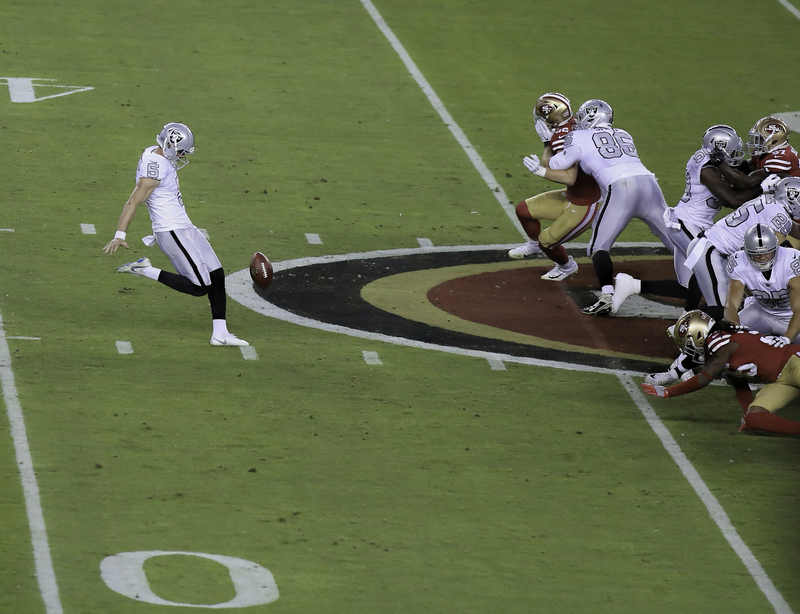Last updated on October 23rd, 2023 at 05:22 pm
Roughing or running into the kicker are two penalties that happen whenever a defensive player runs into the kicker or punter during a kicking play. Often, a roughing the kicker penalty occurs if contacting the kicker is severe.
If a player runs or slides into the kicker or punter’s planted foot while they’re kicking a ball, a roughing the kicker penalty occurs. Similarly, if the kicker returns both feet to the ground, and the player slides into or makes contact with both legs in a way that an official judge as “severe,” the player can also receive a roughing the kicker penalty. Since the holder is a defenseless player, protections will extend to him during field goal attempts.
Difference Between Running and Roughing the Kicker?
Running into the kicker is seen as less severe when you compare it to roughing the kicker. If a defensive player hits a kicker’s swinging leg, the play will count as running into the kicker. Similarly, the penalty downgrades if the player slides into the kicker, so they can’t return both feet to the ground.
Roughing the kicker and running into the kicker each have different punishments. Running into the kicker is a less severe penalty and is a 5-yard loss for the team. It’s one of the few penalties that doesn’t come with an automatic first down, like an offside call.
Meanwhile, roughing the kicker, like other well-known calls (such as pass interference, illegal use of hands, or a facemask), is a personal foul, a 15-yard penalty, and an automatic first down for the kicking team.
When Can the Defense Make Legal Contact with the Kicker?
There are some circumstances where contact with the kicker doesn’t automatically draw a roughing kicker penalty. For example, the punishment doesn’t occur if the contact is incidental between the two players or after the defender tries to swat down or tip the ball. Similarly, there is no penalty if the contact occurs due to the kicker’s motions or during a rugby-style kick.
Blockers don’t have to worry about penalties if someone shoves them into the Kicker or if a foul occurs by the kicking team that causes the contact. Finally, the opposing team can legally hit if the kicker goes to the ground to recover a loose ball.
It’s important to know that even if a contact seems to be incidental or legal, the officiating team has discretion when awarding penalties due to contact with the kicker or holder. The NFL rulebook states explicitly, “when in doubt, it is a foul for roughing the kicker.” This rule means that the referees on the field have the right to decide whether or not contact with a kicker was intentional. The same goes with issuing a 5 yard or 15-yard penalty on the play.
Conclusion About Roughing the Kicker
In summary, roughing the kicker is a personal foul in a football game. This penalty aims to keep the kicker safe while penalizing the offender with a loss in yards. There are several exceptions to the rule, however. Some examples include allowance for incidental contact and tackles made when kickers attempt to recover a loose ball. Finally, fans must remember that the officiating team always has discretion on the call.
Related Topics
What is a Play Action Play in Football?
What is a Field Goal in Football?
What is a Hail Mary in Football?
What is an Audible in Football?
How Does Overtime Work in the NFL?
What is a False Start in Football?
What are Special Teams in Football?
Greg Kristan, owner of The Stadium Reviews, LLC and TM Blast, LLC, brings his extensive experience visiting over half of the MLB ballparks, along with numerous MLS, NHL, NBA, and NFL venues, to provide in-depth coverage on the bag policy, food options, and parking. He has also been interviewed about his experiences on several sports podcasts.


